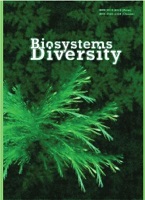The degradation of forest areas in Morocco: Case of Benslimane province
The degradation of forest areas in Morocco: Case of Benslimane province
Author(s): A. Hammouyat, A. Ichen, M. Elmalki, D. ChahhouSubject(s): Environmental Geography, Maps / Cartography, Environmental interactions
Published by: Дніпропетровський національний університет імені Олеся Гончара
Keywords: Benslimane; Morocco; land cover; remote sensing; mapping; forest degradation; grazing; quarries; human causes;
Summary/Abstract: This article aims to shed light on the process of known degradation of the forest area of Benslimane province during the period 1990–2020 and to specify the most important human causes which contributed to it (quarries, extension of the built-up area, the impact of agricultural activities, grazing and collection of firewood), by using remote sensing techniques (spatial images for the years 1990–2000–2010–2020) to produce Land Cover maps. The following satellite images were used, Landsat 5 TM, Landsat 7 ETM+ and Landsat 8 OLI, with a spatial precision of 30 m, the Semi-Automatic Classification Plugin (SCP) in QGIS was used for atmospheric correction, and the Spectral Angle Mapping algorithm for the images’ classification. The rating evaluation of the Kappa coefficient shows the following ratios for the years 1990–2000–2010–2020 respectively ; 0.89–0.90–0.90–0.93. The results showed that the forest area of Benslimane province has declined by 11.4% or about 6,027.7 ha between 1990–2020 at the rate of 200 ha/year, which has been turned into matorral land or bare land. This forest also lost 35.2% of its vegetative density and has become much sparser, while the original grazing areas surrounding it have been reduced by 50.4%. Moreover, the area of quarries increased by 1,097.4%, the percentage of built-up area increased by 328.2%, and the agricultural area expanded by 32.7%. These results can be used as preliminary data for future studies and can help policymakers focus on the real drivers of forest degradation, in order to develop interventions to ensure the sustainability of natural resources.
Journal: Biosystems Diversity
- Issue Year: 30/2022
- Issue No: 4
- Page Range: 388-396
- Page Count: 9
- Language: English

